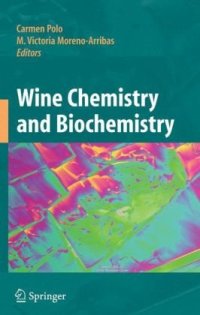
Ebook: Wine Chemistry and Biochemistry
- Genre: Chemistry
- Tags: Food Science, Biochemistry general
- Year: 2009
- Publisher: Springer-Verlag New York
- Edition: 1
- Language: English
- pdf
The aim of this book is to describe chemical and biochemical aspects of winemaking that are currently being researched. The authors have selected the very best experts for each of the areas.
The first part of the book summarizes the most important aspects of winemaking technology and microbiology. The second most extensive part deals with the different groups of compounds, how these are modified during the various steps of the production process, and how they affect the wine quality, sensorial aspects, and physiological activity, etc. The third section describes undesirable alterations of wines, including those affecting quality and food safety. Finally, the treatment of data will be considered, an aspect which has not yet been tackled in any other book on enology. In this chapter, the authors not only explain the tools available for analytical data processing, but also indicate the most appropriate treatment to apply, depending on the information required, illustrating with examples throughout the chapter from enological literature.
The aim of this book is to describe chemical and biochemical aspects of winemaking that are currently being researched. The authors have selected the very best experts for each of the areas. The first part of the book summarizes the most important aspects of winemaking technology and microbiology. The second most extensive part deals with the different groups of compounds, how these are modified during the various steps of the production process, and how they affect the wine quality, sensorial aspects, and physiological activity, etc. The third section describes undesirable alterations of wines, including those affecting quality and food safety. Finally, the treatment of data will be considered, an aspect which has not yet been tackled in any other book on enology. In this chapter, the authors not only explain the tools available for analytical data processing, but also indicate the most appropriate treatment to apply, depending on the information required, illustrating with examples throughout the chapter from enological literature.